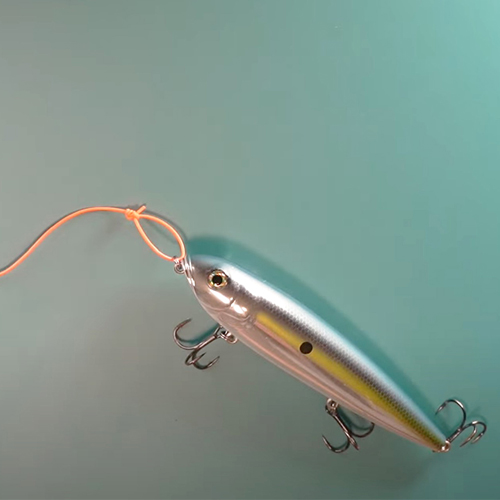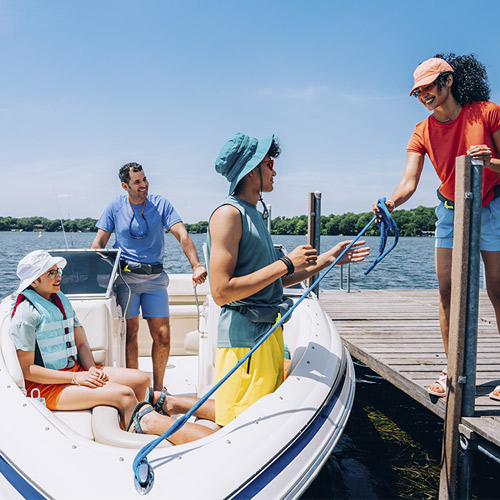Surf Fishing
Saltwater surf fishing is a great way to start fishing in a trip with your family and friends. Get surf fishing basics along with expert surf fishing tips to improve your chances when fishing from shore, piers, jetties, points and more.
Equip yourself with the right tackle and discover essential gear, saltwater lures, and strategic tips for a successful shoreline adventure. Our guide offers valuable insights to elevate your surf fishing experience. So, gear up, head to the shoreline, and embrace the adventure of surf fishing. You can also download our FREE e-book "Surf Fishing Quick Guide" for an in-depth exploration of essentials. Start your journey today and reel in the excitement!
Best Fishing Tackle For Surf Fishing
As with all other types of fishing, surf fishing begins with choosing the right gear, such as surf fishing rods and reels and learning the best saltwater lures for surf fishing. Use the information below as a guide for preparing for a great day of surf fishing.
- 7- to 12-foot medium to heavy action rod with a heavy-duty, corrosion-resistant spinning reel.
- 17- to 20-pound test line with 30 to 40-pound test leader line (can go up to 50-pound leader line if you have a need to increase the weight of the sinkers you are using due to current or wind)
- Lures like jigs, plugs, soft plastics and metal spoons, or if possible, live bait such as shrimp or crabs
- A variety of hooks ranging in size from 1/0 to 10/0, depending on species and size of bait used
- 3 to 8-ounce sinkers (use the heavier sinkers when fishing areas with strong current or tidal movement)
- Rod holder or sand spike that can hold your rod in place and prevents your reel from touching the sand
Want to learn more about saltwater surf fishing? Download our FREE e-book "Surf Fishing Quick Guide" in partnership with Tailored Tackle
Best Places For Saltwater Surf Fishing
Once you have your tackle, it’s time to work on learning some surf fishing basics. Head to the beach and look for the below areas. If you are not able to locate them visually, consider looking over a topical map, asking a fellow angler or checking the local fishing reports. Here are some surf fishing tips.
Troughs
Pay attention to where the waves break off the shore or beach. The area where the waves break is generally where you will find a trough that runs parallel to the beach. It's near these troughs that you will find areas of fast-moving current where the baitfish and crustaceans will most often be found. You can often spot large schools of baitfish near the surface in these areas or see birds several birds flying overhead. Try using a fish finder rig in these areas for species such as flounder, sea trout, bluefish and pompano.
Jetties And Breakwaters
Look for jetties or rock formations that extend out into the water and influence the current. Jetties are good places to try surf fishing since the rocks situated below the water are usually home to the baitfish and crustaceans that larger fish like to feed on. Waves crash up against jetties and breakwaters and create holes as the wave recedes and carries sand out with it. Since the hole is deeper than the ocean floor, it attracts small shellfish and baitfish looking for calmer water and a place to hide. These hiding spots create ambush spots for predatory game fish. Man-made structures like jetties and breakwaters also give shore anglers better access to deeper waters.
Points
Points are natural sand or land formations that protrude out into the ocean and create an area of current where game fish can corral baitfish. The current flowing past a point will create areas of shallow water that borders deep holes. At low tide, you can wade out onto the point and cast beyond the breakers. With the incoming tide, try fishing these holes and bars that may have been exposed during low tide. Be sure to exercise extreme caution when surf fishing points since swiftly moving currents can push anglers from shallow water into deep water very quickly.
TIP: As a rule, anglers who wade into the surf should always be aware of tidal conditions and take a fishing buddy along whenever possible for safety reasons.
Inlets
Inlets are reliable places to find fish because there are two colliding bodies of moving water or current. Inlets are often marked by the presence of other notable fishing features such as jetties, bridges, sandbars, sloughs and deep holes. The combination of structure and convergent water creates an ideal scenario for surf fishing. Look for rips, bars or troughs where game fish will usually be waiting for a meal to drift by in the moving current. The fish tend to be stationary, so it's best to use baits with a Carolina rig or a jig or plug that will move along with the current to provide a natural presentation to the fish.
Always looking for a new fishing challenge? Once you have mastered your saltwater pier and surf fishing skills, it might be a good time to hop aboard a small flats boat and try your luck at backwater or flats fishing .
Baitfish Patches
Success at surf and shore fishing requires observation. If you can spot a school of baitfish, then you might be able to catch bigger fish that are following them. But hurry, game fish strike fast and leave. When you locate a school of baitfish, look for the openings or lighter colored circles in the schools of bait. Often, if a predatory fish is in close vicinity to a school of baitfish, the bait will try to keep a safe distance on all sides of the larger fish to avoid being eaten. This is what creates the holes in the bait schools. If you cannot locate these holes, cast your bait or lure to the outside edges of the baitfish schools.
Fish Schools
Baitfish and schools of larger fish can swim so close together they occasionally change the color of the water. Train your eyes to look for these moving patches of color, and you will be rewarded for your efforts. Cast ahead and let your bait float to the school.
Birds
Yes, believe it or not, surf fishing basics include observing birds. Birds fly above slow-moving baitfish. Get close and try to figure out if the baitfish are dead or alive. If they’re thrashing around, you should fish shallow. If they’re wounded, fish deeper.
Deep Shore Water
Currents can run along the shore and form pockets of deeper water. This deeper water usually appears darker than the surrounding water in the area. Bigger fish will move into these shallows and rest or wait for baitfish to pass by. You might get something bigger than you expected.
Breakers
The calmer waters between the place where big waves crash and calm water starts are called breakers. The crashing waves create a sort of trench in the shore. Food settles in the trench, bait fish come for the food and game fish come for the baitfish. This provides an ideal location to find fish but anglers must understand that fish that come to feed in these areas will feed very briefly in one location and move on to continue searching for food.
Colliding Waves
Underwater currents can collide near points, inlets or other natural or man-made structure. Where these currents meet, food will collect and can be found throughout the water column in concentrated areas. The food will attract baitfish and then game fish. Don’t look for crashing waves. Look for something a little calmer.
Saltwater Weed Beds
Good surf anglers see different colors in the ocean, and they learn to spot weed beds and other creatures attached to them. Smaller fish feed on the weeds and attract the fish you’re after. You’ll want to fish around the edges for the best results.
Surf And Shore
Surf and coastal shore fishing can be done right from the edge of the ocean, from man-made structures like jetties and breakwaters or from a boat. Some surf anglers wade right into the waters to cast to fish that may be lurking under the waves.
The only challenge to fishing from shore is the lack of structure to attract fish, requiring surf anglers to learn how to read the waves, look for color changes in the water, monitor water temperature and understand migration patterns.
Saltwater And Tides
Tides raise and lower the water level approximately two times per day and affect where fish are located and how they feed. The timing of a high or low tide changes daily and is also different for each coastal area.
A shallow area that might hold fish and be a very good spot to fish during a high tide will become a bare mud bank during low tide conditions. A slough (a slight depression in the bottom) that might be perfect for bottom feeding fish during a low tide situation might not hold fish on a high tide.
Running tides (rising or falling) are best since they cause bait to move and promote active feeding among coastal fish. Changing tides, time of day and location are also important surf fishing basics to know when surf fishing in brackish water – coastal water that’s a mix of salt water and fresh water and contains a mix of saltwater and freshwater fish. Brackish water is found in most tidal creeks and rivers along all coasts and is highly affected by tidal movements.
In general, the best fishing is almost always on a rising or falling tide – not the dead low or dead high, also referred to as "slack tides" when there is little or no tidal current.
Rip Tides
Water that flows in and around points, sandbars and rocks tries to find the quickest way out. This escaping water forms a faster-moving river of water through the obstacles. Look for the change in speed and color as the faster moving water typically picks up and carries mud or sand out with it. These deeper “rivers” will attract predatory fish.
Floating Foam And Debris
Foam from crashing waves follows along with the currents. As it moves, it collects debris and small marine critters. Little fish are attracted to the critters and big fish are attracted to the little fish. Sometimes these floating lines of junk are big enough to provide shade for larger game fish. Fish them.
Get more fishing tips in our next section. These surf fishing tips will help you catch fish from shoreline, jetty or a pier,
KEEP LEARNING

How to Tie the Non-Slip Loop Knot
The non-slip loop knot is a popular and reliable choice for securing hooks, lures, and other tackle to your fishing line.
LEARN MORE

Socials
Take me fishing social media links
LEARN MORE

TakeMeFishing x Teen Vogue
Join us on a creative journey as fashion designer Ahmrii Johnson walks us through her collaborative vision and process with Teen Vogue and fashion brand, Rentrayage, to create a special piece.
LEARN MORE


.png?lang=en-US&ext=.png)